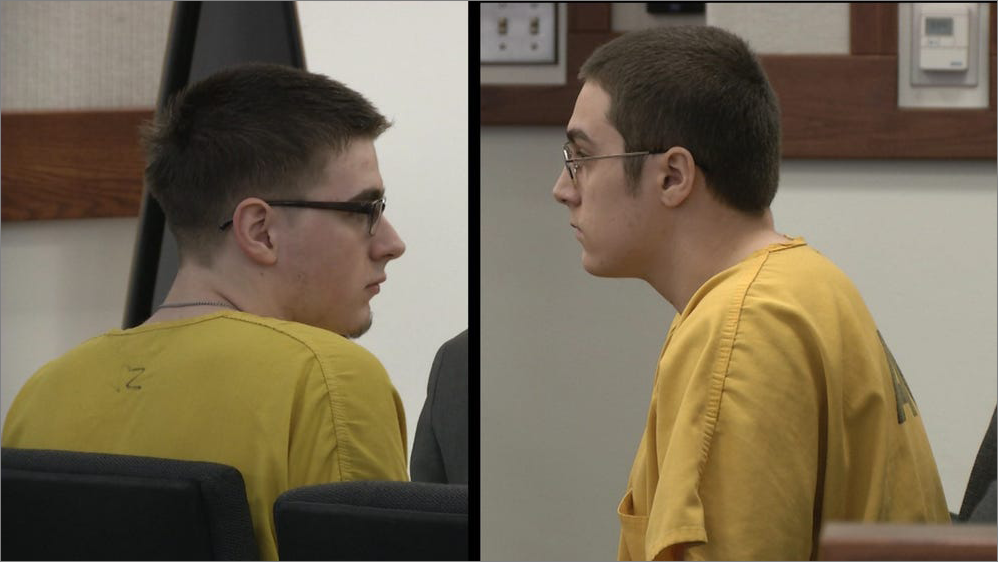As we noted back in June, the trial of the two remaining defendants in the David Grunwald murder, Bradley Renfro and Austin Barrett, was moved to Fairbanks in a bid to guarantee a fair trial. The publicity surrounding the case was justifiably judged too prejudicial in Palmer, due to its proximity to Anchorage.
This blog just received a comment from Edie Grunwald, David’s mother, concerning additional changes in the trial status. From Edie Grunwald:
Another update: Renfro and Barrett have severed. Renfro’s trial has started with jury selection in Fairbanks.
Renfro’s attorney is using “juvenile brain” as a defense. Thing is: Renfro is in adult court and the law is the law. Plus, the juvenile brain theory is about non-violent behavior. Violence is on a totally different level – especially murder.
Note to author, Sept 2, 2019
There are two threads here, both worth examining: The split and the juvenile brain defense.

The Split
Austin Barrett’s attorney raised some admissibility issues which made it impossible to go forward without impacting Renfro’s portion of the proceeding. The gist was Barrett’s claim that he was illegally detained and questioned prior to his arrest.
“He was [then] placed against his will in the back seat of a police cruiser and taken to the Alaska State Troopers Post in Palmer,” Barrett’s attorney wrote. He [Barrett] was detained for three hours and agreed to talk with police. “Eventually Mr. Barrett gave a statement which may have incriminating aspects to it.”
Palmer District Attorney Roman Kalytiak responded by telling the court he didn’t want to force the two suspects to go to trial together. And Judge Gregory Heath agreed to sever the trials. “This should have been done quite a while ago,” he said. “I think there are issues that could have easily arisen at trial which could have made problems for the court and could have ended up in a mistrial,” Judge Heath said.
Edie Grunwald agreed with the judge’s logic. ““Early on we thought it should have been severed. You’ve got someone who was 19 [Barrett] at the time of the murder and someone who was 16 [Renfro] at the time of the murder and having them both together like that complicated things,” Grunwald noted.
UPDATES courtesy KTVA, Anchorage, August 22, 2019
Juvenile Brain Defense
At 16, Bradley Renfro was among the youngest of the four youths charged with Grunwald’s death. Because he possessed an “immature teen brain,” so the defense goes, he was especially susceptible to the influence of his older, or more dominant, peers. There is some scientific support for this assertion, including data cited by the National Juvenile Justice Network:
- “Brain development takes place in stages and is not fully complete in adolescence. The frontal lobe, especially the prefrontal cortex, is the ‘executive’ part of the brain that regulates decision making, planning, judgment, expression of emotions, and impulse control. This region of the brain may not be fully mature until the mid-20s.
- “The limbic system, which helps to process and manage emotion, is also developing during adolescence. Despite the fact that the limbic system is not yet fully mature, it stands in for the underdeveloped frontal lobe to process emotions. This causes adolescents to experience more mood swings and impulsive behavior than adults.
- “As a consequence, youth decision-making is heavily influenced by context. Their intellectual capabilities can be as developed as adults; they are capable of making reasoned decisions and often will make better decisions than adults. However, when youth are placed in environments where they may be susceptible to peer pressure, where there is pressure to make a decision quickly, where there is an opportunity for risk-seeking behavior, and/or where there is high emotionality, they have increased potential for their judgment to be driven by emotion rather than by reason. This may explain why youth are often arrested for violent acts in groups [emphasis added].”
The science notwithstanding, the success of this defense is mixed. Dzhokhar Tsarnaev, convicted in the 2013 Boston Marathon bombing, tried the immature brain defense as a mitigating factor in his death sentence. He failed.
But in a landmark U.S. Supreme Court case, Roper v. Simmons, the Court ruled five to four that executing people for a crime they had committed as a minor violates the constitutional ban on cruel and unusual punishment. Christopher Simmons, who was 17 at the time of his crimes, had committed burglary, kidnaping, stealing, and murder in the first degree. This lethal cocktail of crimes was seemingly mitigated by the defendant’s age.
In a joint amicus brief, the American Medical Association, the American Psychiatric Association and other organizations explained that the adolescent reward system is more sensitive than that of an adult. As a result, teens find sensation-boosting and pleasurable activities, including the approval of peers, extremely compelling.
Subsequently, in Graham v. Florida in 2010, the Court banned sentences of life without parole for juveniles convicted of nonlethal crimes. In a 2012 majority ruling against mandatory sentencing of life without parole for juvenile killers, the majority cited neuroscience. [1]
All of this takes place in the context of an Alaska law which sets strict parameters for when a minor is charged in court as an adult. This is what Edie Grunwald is referring to when she says, “the law is the law.”
According to Clint Campion, Anchorage District Attorney, “[Under Alaska law], a minor who would be 16 years or older who commits certain offenses would be required to be charged as an adult.” The types of offenses which qualify a minor to be charged as an adult include Class A or unclassified felony offenses against a person such as homicides, sexual assaults, sexual abuse of a minor or kidnapping.
That’s how Bradley Renfro ended up in this position. He’s a 16-year-old charged with homicide. But we’ll be following this one. There are major questions at stake here, juxtaposing current law with emerging neuroscience. Somehow I get the feeling not everybody’s going to be happy, no matter the outcome.
[1] Miller v. Alabama, 567 U.S. 460 (2012), was a United States Supreme Court case in which the Court held that mandatory sentences of life without the possibility of parole are unconstitutional for juvenile offenders. The ruling applied even to those persons who had committed murder as a juvenile, extending beyond Graham v. Florida (2010), which had ruled juvenile life without parole sentences unconstitutional for crimes excluding murder.
Copyright 2019. All rights reserved.
Purchase Butcher, Baker
Order my latest book, “What Happened In Craig,” HERE and HERE, true crime on Epicenter Press about Alaska’s Worst Unsolved Mass Murder.

1 thought on “Barrett & Renfro Split in Knik River Murder Trial”